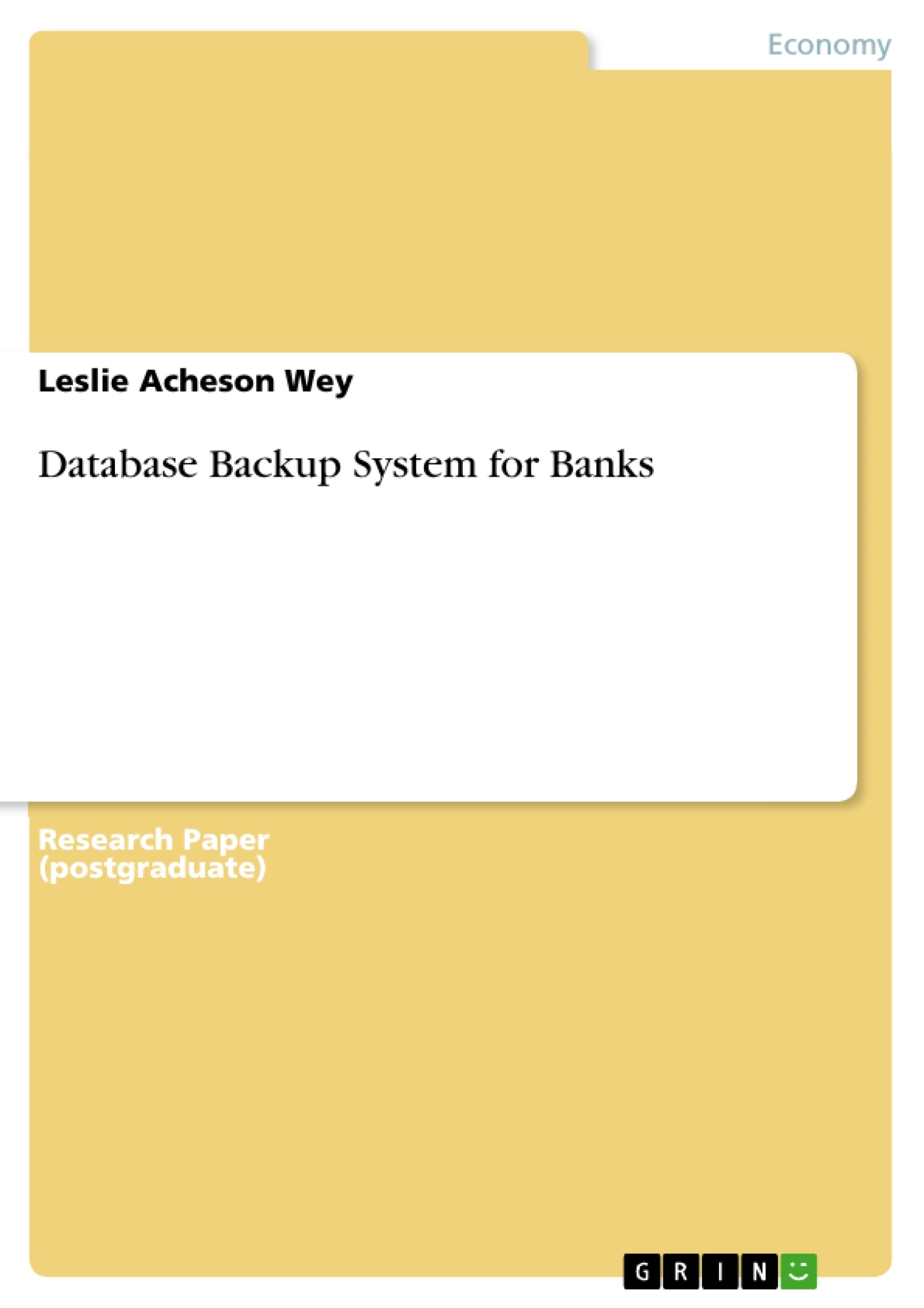This study, Disaster Recovery Database Backup System Model and Banks' Survival, examines the role of effective and efficient database backup system in the life of financial institutions with Zenith Bank Plc as the case study. This study resulted from the fact that "Zenith Bank" faces a significant amount of responsibility as a new generation private gone public bank. According to experts in IT "Even if an ATM is down for two hours, it becomes a huge issue and customer complaints start to pour in". Thus, continuity becomes very crucial in the financial services industries.
The general objective of the study is to examine the role of improved disaster recovery database system model in bank survival and business continuity. Zenith Bank is used as a case study because of its success story in terms of Information Technology applications. In carrying out the study quantitative and qualitative method of sample collection were used while questionnaires were distributed to 120 respondents from the 'Bank' and its subsidiary Zenith Medical Centre all in Abuja. Likert-type scale is used to obtain respondents' opinion, while Friedman Chi-square is used as statistical tool to critically analyze the responses. The findings include: banks are database services organization, therefore, need disaster recovery database backup to continue in business in the face of threats and incidents.
The conclusion is that Zenith Bank should continue to put in place improved disaster recovery plan in line with global best practices. The recommendation includes; other banks should put effort to have effective and efficient database backup system model in order to prepare for incidents, and the CBN as the regulatory umpire should direct financial institutions in Nigeria to put in place good and reliable disaster recovery database backup system model because "the shrewd one sees disaster and proceeds to hide himself". The study suggests that there should be research to identify areas prone to disaster incidents in Nigeria both in physical attacks and cyber attacks.
Table of Contents
- Abstract
- Table of contents
- Chapter one, Introduction
- 1.0 Introduction
- 1.1 Background to the study
- 1.2 Statement of the problem
- 1.3 Objectives of the study
- 1.4 Research questions
- 1.5Purpose of the study
- 1.6 Scope of the study
- 1.7 Significance of the study
- 1.8 Limitation of the study
- 1.9 Operational definition of terms
- 1.10 Research methodology
- Chapter two, Review of related literature
- 2.0 Introduction
- 2.1 The Conceptual framework
- 2.1.2 The Theoretical framework
- Chapter three, Research methodology
- 3.1 Introduction
- 3.2 Research Design
- 3.3 Population of study
- 3.4 Sample size
- 3.5 Sample procedure/ Technique
- 3.6 Instruments for Data collection
- 3.7 Process of Data Collection
- 3.8 Method of Data Analysis
- 3.9 Validity of the instrument
- 3.10 Reliability of instrument
- Chapter four, Data presentation, analysis and interpretation
- 4.1 Introduction
- 4.2.1 Demographic data of respondents
- 4.2.2 Analysis of Respondents' responses on questionnaires variable
- 4.2.3 Discussion and interpretation of findings
- 4.2.4 Summary
- Chapter five, Summary, Conclusion and Recommendation
- 5.1 Introduction
- 5.2 Summary
Objectives and Key Themes
This study aims to examine the effectiveness of a disaster recovery database backup system within the context of Zenith Bank PLC. The primary focus is on assessing the system's ability to ensure the bank's survival in the event of a disaster. The study will analyze the existing system, identify potential vulnerabilities, and propose recommendations for improvement.
- Disaster recovery database backup system
- Bank's survival in the face of disasters
- Vulnerabilities within the system
- Recommendations for improvement
- Case study of Zenith Bank PLC
Chapter Summaries
Chapter one introduces the research study, outlining its background, problem statement, objectives, research questions, purpose, scope, significance, limitations, and operational definitions. It also details the research methodology employed in the study. Chapter two delves into the review of related literature, examining relevant concepts and theoretical frameworks related to disaster recovery, database backup systems, and the banking industry. Chapter three focuses on the research methodology used in the study, encompassing aspects such as the research design, population, sample size, sampling technique, data collection instruments, data collection process, data analysis method, and the validity and reliability of the instruments used.
Keywords
This research focuses on disaster recovery, database backup systems, bank survival, case study, Zenith Bank PLC, vulnerability analysis, system improvement, and research methodology.
- Quote paper
- Leslie Acheson Wey (Author), 2019, Database Backup System for Banks, Munich, GRIN Verlag, https://www.grin.com/document/512588




